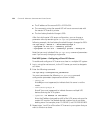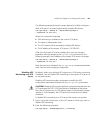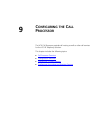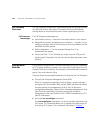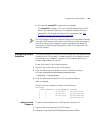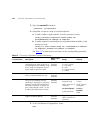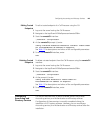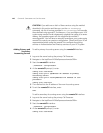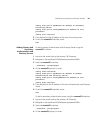
142 CHAPTER 9: CONFIGURING THE CALL PROCESSOR
Call Processor
Overview
The Call Processor handles both call processing and call routing and acts
as a SIP back-to-back user agent. This means that the Call Processor
actually serves as one active end point for each signaling leg of a call.
Call Processor
Advantages
The Call Processor advantages are:
■ Uses stateful routing — maintains information about a user’s session.
■ Designed for memory and performance utilization — recycles its own
memory and keeps track of that memory so that any problems can be
identified and fixed quickly.
■ Built-in diagnostics — Can be accessed through the CLI to
troubleshoot the system.
■ Writes one CDR — The Call Processor writes only one CDR per call
containing all information for that call, which makes the system more
efficient.
Configuration
Methods
Call Processor configuration is normally completed during the installation
of VCX system software. However, you may need to reconfigure the Call
Processor after the installation, for example, to add additional trusted end
points if you add a branch office.
There are three recommended methods of configuring the Call Processor:
■ Through the Enterprise Management Suite (EMS)
EMS is an optional management tool that offers a simple method to
configure the Call Processor. EMS uses an SNMP interface that allows
for easy viewing and management of all of the Call Processor
configurable parameters. See the 3Com Enterprise Management Suite
User Guide for basic EMS information and see the Enterprise
Management Suite User Guide for VCX V7000 Components for VCX
specific information.
■ Using the vcx-reconfigure command
The vcx-reconfigure command is run from a console attached to the
VCX server. This command allows you to modify the configuration of
an existing VCX system. This command is described in Chapter 7
.



